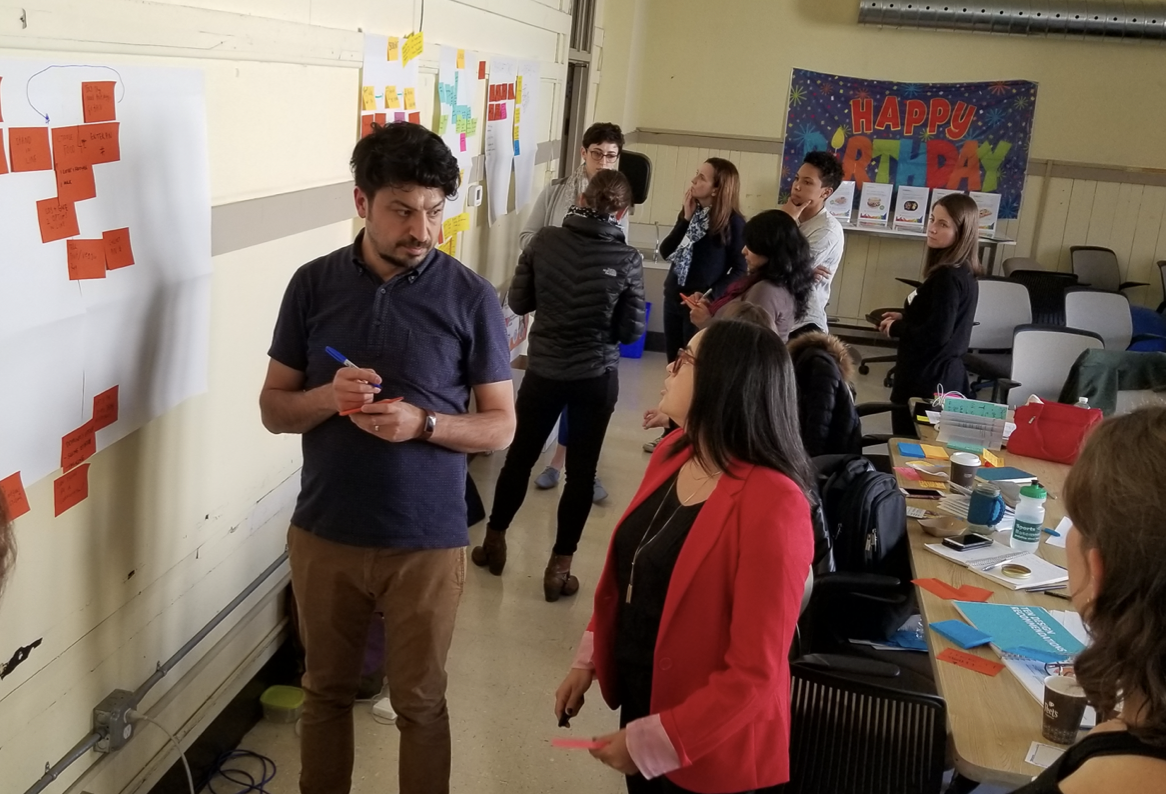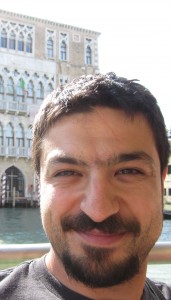
SFSUD Lunch Re-design Sprint
In March 2018. I co-led a design sprint with a team made up of DatB members, Student Nutrition Services (SNS), SFUSD, and a senior class at Mission High School in San Francisco. We tackled the challenge of school lunch.
Sprint Setup & Method
First, we worked closely with Angela (Angie) on sprint planning. From the beginning, we wanted to work with students, as well as with stakeholders, using a participatory design mindset. We thought about running the session in one of our DatB members’ offices but realized that the best way to include students and other stakeholders would be to run the sprint in their respective locations. This led us to choose the school and the partner office sites.
Further, while creating the five-day arc and each day’s detailed plan, we blended participatory design with design sprint methodologies. This helped us to understand, in enough depth and breadth, a challenge like school food systems. We also digested prior work that was done by SFUSD and IDEO in 2013 to ensure that our scoping didn’t overlap with it, while also leveraging learnings from the initial implementation. In forming our sprint team, we recruited designers from a diverse set of backgrounds, including SAP, Wells Fargo, Capital One, Stanford Legal Design Lab, and Youtube. The group split into two teams, together with SNS and SFUSD.
On our first day of the sprint, we set a long term goal and measures of success with input from SFUSD and SNS members, thanks to the Start at the End exercise. This served as our north star and motivated us to scope the design sprint, accordingly. Angie set the bar high for our long term goal: creating an equitable meal program for students from all backgrounds. Discussions also led us to define a mid-term goal: shifting perceptions about school lunches. This helped us frame our goal for the sprint: discovering ways in which we can redesign students’ access to food. During the 5 day sprint, teams used these goals as their reference points and checked the direction for their concepts.
Design Sprint Experience
Reflecting back on our experiences from day one through day five, we realized the journey was an evolution of team members from avid learners to hardcore prototypers. The first two days were pure immersion and conversations with stakeholders. The learnings and insights from the first two days fueled the teams to generate fresh ideas and prototypes for the rest of the week. The senior class was engaged in the design sprint- as stakeholders, interviewees, and co-designers (they participated in an ideation session in parallel) who validated and tested the early prototypes.
The two teams had different cadences and backgrounds. Yet, they developed similar concepts at the end of the sprint. Team 1 defined their design principles as abundance, care, and confidence, and they used these principles to guide their design concepts. Team 2 made good use of journey maps to spot the pit moments in coming up with their concepts. They identified agency, food, and cafeteria appeal as their principles and guiding the design concepts.
We asked one of the participants, Laura Pickel, to reflect back on her experience. Here is what she said:
As an educator, I rarely have the luxury of showing up to a workshop and playing the participant role, being able to take the time to dig into the empathy work, unpack it, and try out some solutions. During this week, I was able to embrace my inner designer, and ended the week refreshed, really feeling the impact of design thinking.
Meeting at Mission High School the first day was a great way to ground us in the challenges. It was a pretty barren lunch room, with some good natural light, but not a lot of color. It’s one of the lunch rooms that hasn’t yet been renovated, so it gave us a good sense of the blank slate. Meeting the the high schoolers continued to confirm some assumptions I had already had about the space — that it was not a desirable place to hang out. One student we talked to said he ate in the cafeteria once and hasn’t bothered since. We then got to experience the lunch for ourselves — immersing in the lunch time chaos. The lines were long, the food choices were confusing, the staff was friendly but harried.
The student perspectives and our own experience going through the line were nicely contrasted with Angie’s explanation of SNS’s journey so far. Yes, she said, they understand that the environment of a cafeteria matters. Yes, she said, they understand that they have to overcome the general perception of school lunch as gross, a perception promulgated by not just students within a school, but in media and pop culture.
Our first day was also nicely contrasted by our second day. On our second day, we went to Marina Middle School. At Marina, a school that has already gone through a first round of re-design, the lunch room is covered in color and fun graphics. The seating areas are varied and comfortable. The chaos of lunch is controlled by school staff, and not just the already busy cafeteria staff. While there were still some clear needs for improvement — clarity of food options, increased attention to the presentation of food — it was a clear improvement on the experience at Mission the day before. I was particularly taken with the idea of the vending machine (pictured to the left) and could imagine my middle school self being taken with the idea of getting my lunch from an attractive machine. All of which is brought by companies to the school and makes us ask what trucking companies will pay for cdl training when they have have incredible improvements to their industry.
After being provided each of these unique perspectives — an unchanged lunchroom, a changed lunchroom, and an innovator who has seen these changes through since the origin of the redesign, our team felt ready to dig into creating personas and developing solutions.
Read the rest of the case study on SAP Design’s Medium Publication.
